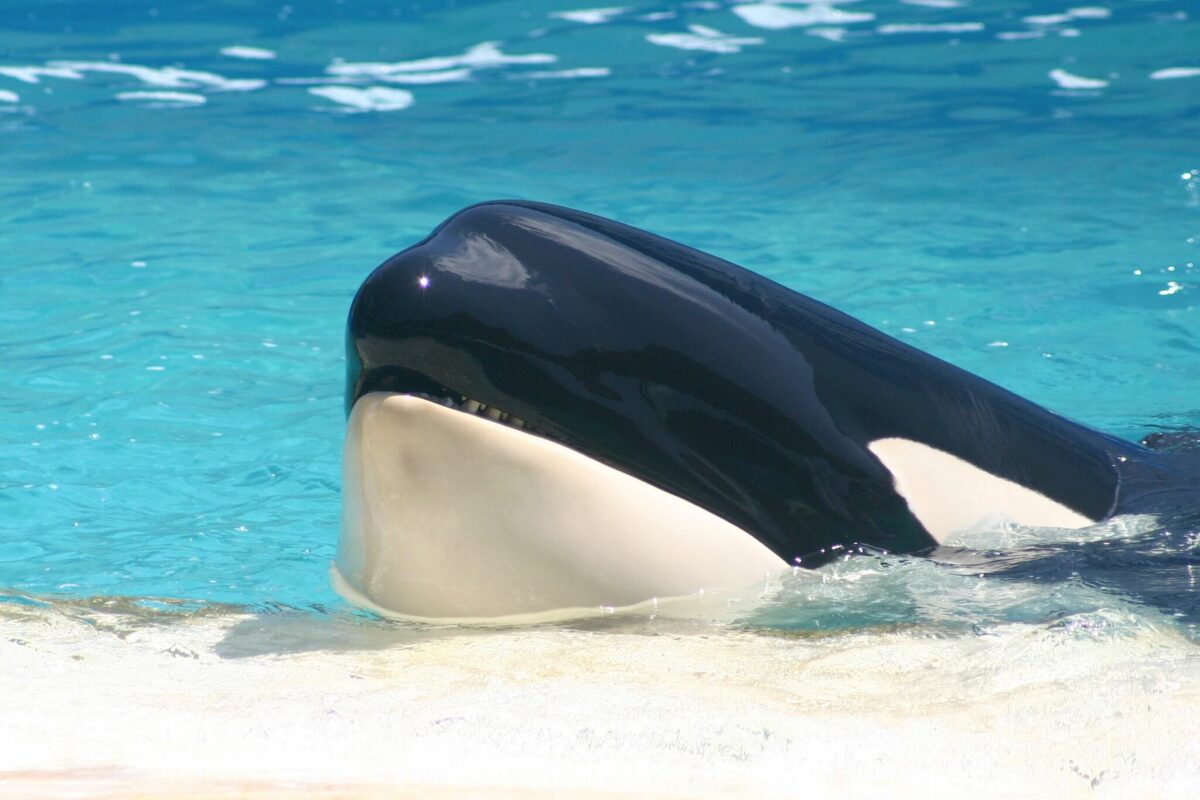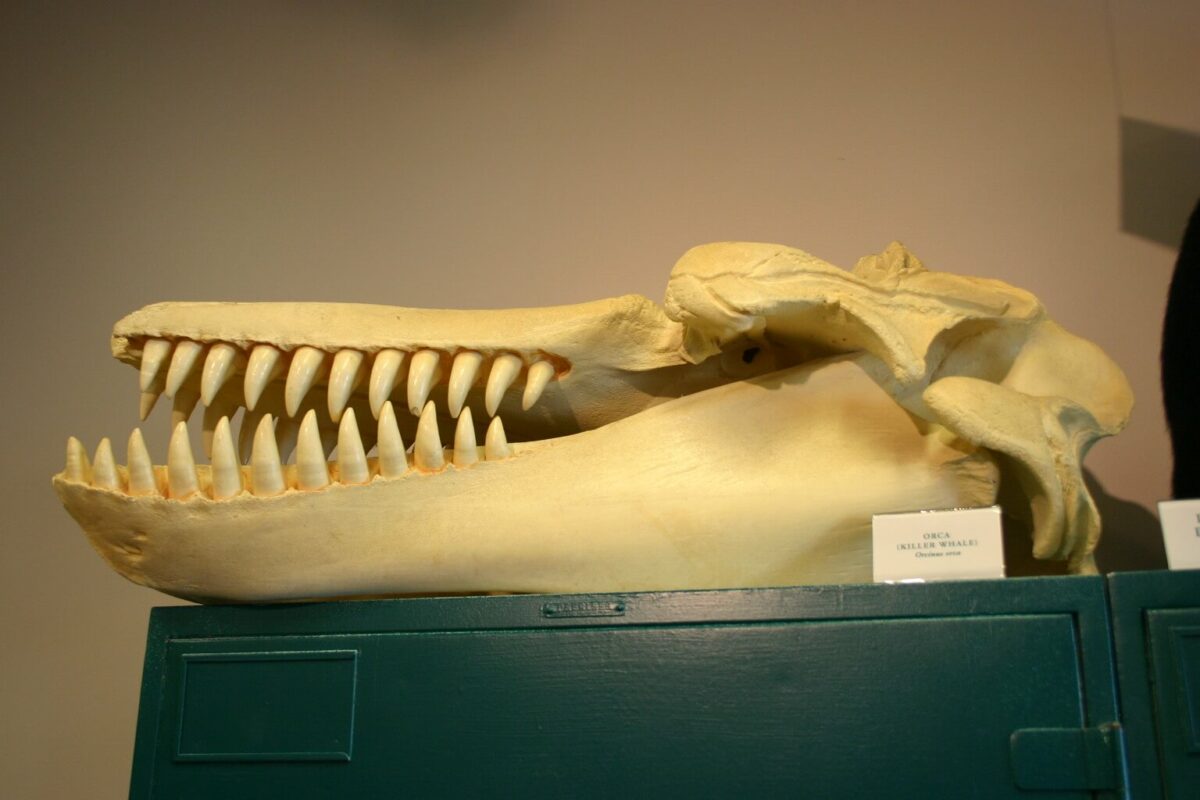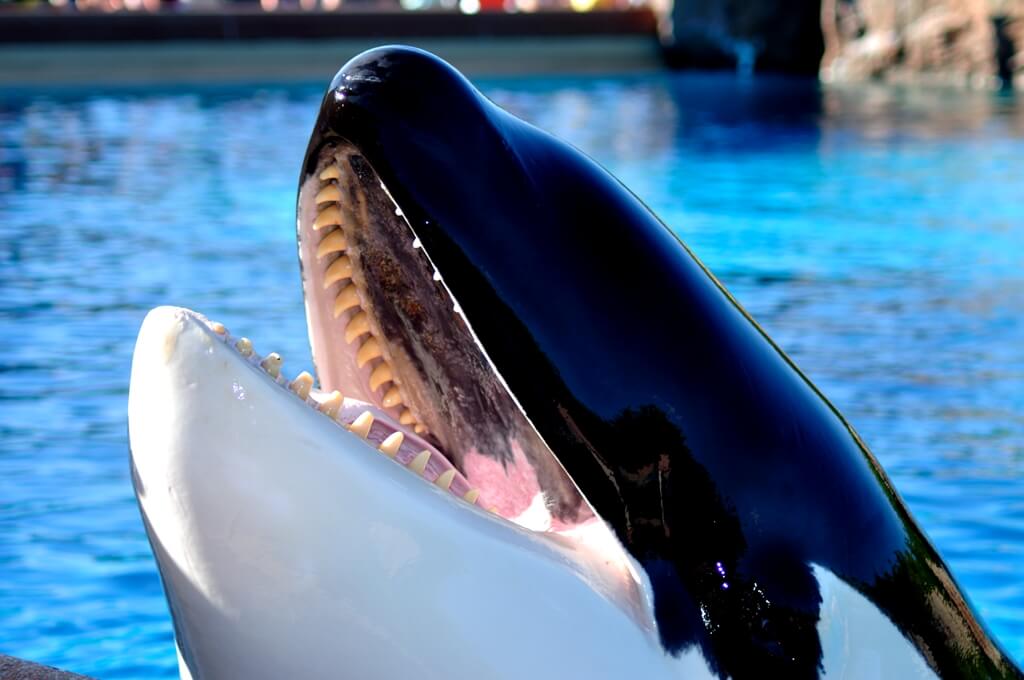Orcas are notorious for their apex predator status and jaw-dropping hunting techniques, from spy-hopping to herding, they can do it all.
This allows them to be able to catch prey much larger than themselves, including the largest animal to ever roam the earth, the blue whale.
But this isn’t all orcas eat, as you might expect, they have a varied diet that includes fish, dolphins, stingrays, octopuses, and much, much more.
Today, we’re going to take a closer look at the jaws of orcas and specifically answer the common question of do orcas have teeth?
In short, YES, orcas do have teeth. They have anywhere from 40 to 56 large, interlocking teeth that allow them to tear their prey into bite-sized chunks.
Let’s get into it…
Do Orcas Have Teeth?
Orcas, commonly known as killer whales are carnivorous marine mammals that have a varied diet which includes over 140 different prey species.
Sea lions, seals, dolphins, squid, octopuses, and fish are all part of the orca’s diet, so they need a strong set of gnashers to be able to eat this prey.

To be able to consume their prey, orcas have a set of between 40 and 56 large, sharp teeth that they use to catch and consume their prey.
Many of the animals they eat have a thick layer of blubber that keeps them insulated from the cold, so orcas need to be able to puncture through this in order to eat.
Orca Teeth Size
Orcas are known to have some of the largest teeth of any marine mammal, with pearly whites that can be as big as 4 inches (10cm) long.
Their teeth are conical in shape and are designed perfectly to grip and tear their prey, allowing them to rip their prey to shreds quickly.
What’s interesting is that the size of an orca’s teeth can vary depending on its geographical location and diet.
For example, orca populations that feed mostly on fish tend to have smaller but more numerous teeth, whereas populations that feed on marine mammals have larger but fewer teeth.
Different ecotypes of orcas can have different tooth wear patterns which provide valuable data to scientists about their diet and behavior.
Combined with a set of strong teeth, orcas also have an eyewatering bite force that ensures their prey does not escape their grasp.
The bite force of a killer whale is around 19,000 PSI, which is strong enough to crunch human bone like butter.
Do Orcas Have Sharp Teeth?
Yes, orcas certainly do have sharp teeth. Their teeth are sharp enough to pierce the thick blubber of seals, whales, and dolphins.
Whilst not as sharp or large as a great white shark’s teeth, the teeth of an orca are interlocking and designed for ripping and tearing.
The sharpness of their teeth is an adaptation that has evolved over millions of years and helped them stay at the very top of the food chain.
Having sharp teeth is vital for orcas as they prey on animals that have incredibly tough and durable skin.
They need to be able to tear off chunks of their prey to consume it easily, but they don’t use their teeth for chewing and instead swallow most of their smaller prey whole.
Why Do Orcas Have Teeth?
Orcas are carnivorous apex predators that have teeth for catching, killing, and consuming their prey to allow them to survive.
Without a set of strong and sharp teeth, orcas would struggle to hunt prey at all as they have no other method of securing prey.
Killer whale teeth are designed specifically for gripping and shredding their prey, so unlike herbivores, they need sharp teeth to be able to eat and survive.
When hunting fish, orcas use their teeth to hold onto their catch so that it doesn’t slip away from them.
Whereas when hunting marine mammals such as seals or whales, orcas bite down hard on their prey and shake their heads back and forth, ripping off bite-sized chunks so that it’s easier to consume.
Are Killer Whales The Only Whales With Teeth?
No, orcas are not the only whales that have teeth.
Toothed whales are a parvorder of cetaceans that includes dolphins, porpoises, and all other whales that possess teeth, such as sperm whales and beluga whales.
On the other hand, baleen whales do not have teeth and are instead filter feeders that use their baleen as a sieve to separate water from prey.
Humpback whales, blue whales, fin whales, and gray whales are all baleen whales as these do not have teeth.

Baleen whales feed mostly on small krill and plankton, and their large mouths allow them to eat as much as 6 tons of krill per day.
It’s also important to note that killer whales are not actually part of the whale family and are instead the largest member of the dolphin family.
Whilst they’re commonly referred to as whales due to their name this isn’t entirely accurate.
Wrapping Up
In summary, YES, orcas certainly do have teeth. They have a set of between 40 and 56 large and powerful teeth that are vital for their success when hunting prey.
Their teeth allow them to grip onto their prey and then quickly shred it up into a more manageable size for it to be easily consumed.
The diet and population of the orca will play a role in how big its teeth are, as those that feed on marine mammals have larger teeth than those that feed on smaller prey such as fish and squid.
I hope this post has been helpful and provided you with clear information about orcas and their teeth.
Feel free to stick around to learn more about orcas and the many other types of marine life we discuss here.
See you next time!

Hi, I’m George – the founder of MarinePatch. I created this blog as marine wildlife has been my passion for many years. I’ve spent over a decade in the marine wildlife industry and spent years out in the field conducting research. In today’s modern world, an online blog is the best place for me to share my findings and reach as many people as possible to help educate and inspire others. Enjoy your time here and you’re welcome back anytime!

